Choosing a Service for Renting Energy in the Tron Network
The Tron blockchain is one of the most flexible cryptocurrency ecosystems, providing the highest transaction speed – up to 2000 per second. At the same time, the gas fee is one of the lowest, if users are well aware of which means are best to use for paying commissions.
Yes, Tron is practically the only blockchain that provides users with a wide choice of means for paying gas fees. Unlike other cryptocurrency networks that require commission payments exclusively in their native crypto. Tron users can use:
- Tron's native crypto – TRX;
- Special resources Energy and Bandwidth;
- USDT TRC-20 stablecoins for their transfer.
The last option is suitable for those who rarely transfer large volumes of USDT TRC-20, do not have TRX on their balance, and do not want to deal with using resources. Beginners in the Tron ecosystem can also use this method of payment for transferring stablecoins initially.
To pay for a USDT TRC-20 transfer transaction in the same currency, you should use the recently launched GasFree function and activate your wallet. This is significantly more expensive than paying for a similar operation with native crypto and even more so – with special Tron resources.
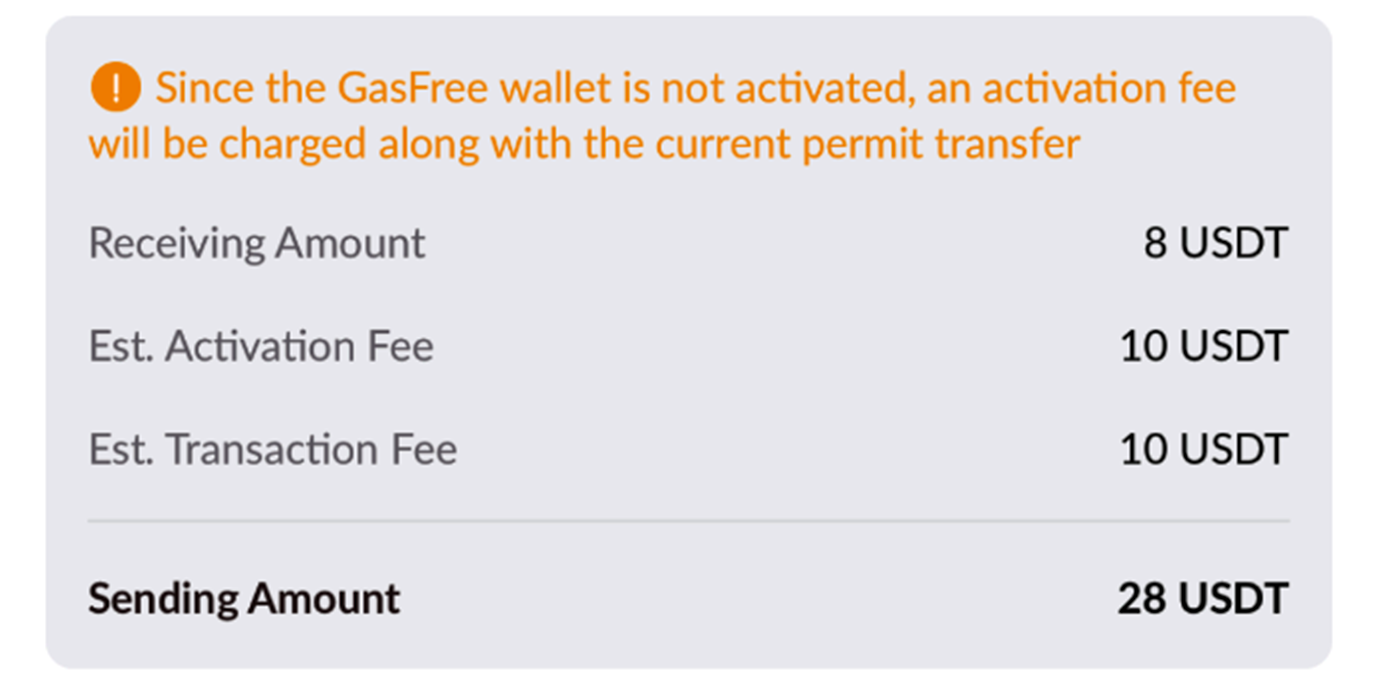
What is the Energy Resource in the Tron Network
To ensure high transaction speeds, the blockchain draws on additional capacities – computational and energetic. It is fair that every user conducting a transaction should compensate the blockchain for these costs.
So that users do not burn the limited volume of TRX in the Tron system in transactions, special resources were developed with which network participants can pay commissions. These are the already mentioned Energy and Bandwidth. The names of the resources make it clear for compensating which costs each of them is intended.

Validators determine the volume of Bandwidth that is credited daily for free to each user's balance. Currently, this is 600 units, which is enough for two transactions with TRC-10 standard tokens. But this resource is also required for interacting with smart contracts (TRC-20 standard tokens). For example, transferring USDT TRC-20 (which is a smart contract) requires 345 units of Bandwidth. Some users forget about this, but the system remembers, and then begins to take TRX from the user's balance to cover the missing Bandwidth units. Of course, these are small amounts, but if we are talking about an exchange that makes dozens of transfers per day to different wallets, it can add up to a decent sum in native crypto.
And if the user's account has insufficient Energy resource, the TRX consumption will be simply enormous. Is it possible to avoid such inefficient spending of Tron's native crypto?
Of course, and there are two ways to do this. The first is staking: that is, you temporarily give the blockchain the right to dispose of a certain volume of TRX. For which Tron rewards you with resources. If you have the opportunity to withdraw such a large volume of TRX from circulation to receive the required amount of Energy – congratulations: you will have practically zero gas fees.
But to get enough Energy, for example, to transfer USDT TRC-20 to just two addresses per day, you must freeze ~24,000 TRX (~6000 USD) for half a month. Again, congratulations if this does not present any difficulties for you. And again, let us remind you that some exchanges conduct dozens of Tron stablecoin transfers per day.
Why are we talking about USDT TRC-20 transfers – that is, about the stablecoin of the Tron network specifically? Because today it is the most demanded cryptocurrency pegged to the US dollar exchange rate. The transfer operation is a call to a smart contract, the fuel for which in the Tron network is the Energy resource.
This means that any exchange or other decentralized platform that deals with cryptocurrencies requires significant amounts of Energy to interact with USDT TRC-20 on the Tron network.
Naturally, it is extremely unprofitable for these business platforms to spend TRX on commissions or withdraw large volumes of Tron's native crypto from circulation. Therefore, the most successful and effective decentralized exchanges choose to rent Energy through special services built on the Tron blockchain to replenish their Energy balance.
We explain what criteria cryptocurrency business platforms, as well as individual users, should be guided by when choosing an Energy rental service.
Criterion 1. Rental Cost
This is one of the main factors in searching for and choosing an Energy rental service. You should proceed from how much you will save when using the service's services compared to if you paid for transactions in TRX.
It is clear that we are not considering staking for frequent interactions with smart contracts, since this method requires large investments, withdrawing crypto from circulation for 2 weeks, and does not guarantee the necessary volume of Energy during network overload. In addition, it is necessary to constantly keep records and monitor reserves, which, of course, does not exclude errors.
We recommend not trusting the unsubstantiated claims of services to verify the real cost of rented Energy. It is enough to conduct a "control purchase" to understand the real situation.
But at the first stage, you can filter out services with more expensive services, even based on their price lists. Let's take for comparison the already known TRON POOL ENERGY service and the recently launched NETTS Energy rental service on the Tron network.

Above is a screenshot from the TRON POOL ENERGY Telegram bot, which promises up to 65% savings on commissions.
And below are screenshots already from invoices for rented Energy, which the NETTS Energy rental service provided to its clients for 1 hour. Please note that in both cases the client rented 131K units of Energy.
That is, this is already a working moment, and you can see for yourself that at different times of the day, savings on transactions using NETTS services can be from 79 to almost 82%.
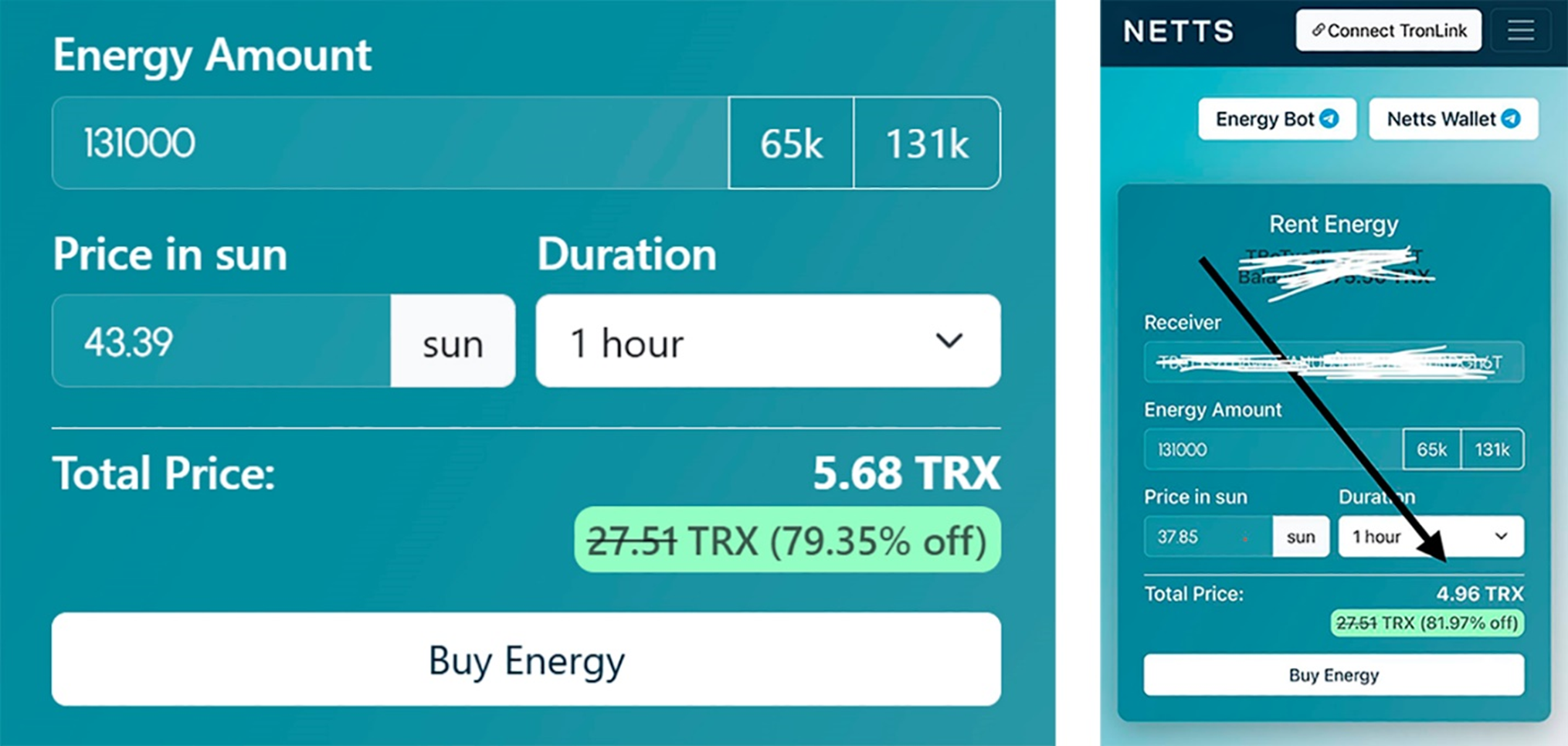
Why such a difference? The second invoice was issued for charging the wallet with Energy during a period of minimal network load. The NETTS Energy rental service, whenever possible, uses Tron's dynamic energy supply model in favor of the client.
As already noted, many well-known platforms have now also begun to provide Energy rental services. For example, the Energy rental offers of the Feee.io platform, which was initially built for resource exchange trading, are more designed for large Tron traders who are provided with additional discounts.
But a screenshot of the results of renting only 32K units of Energy indicates that for "retail" renters, the savings on commissions are somewhat different from those stated.
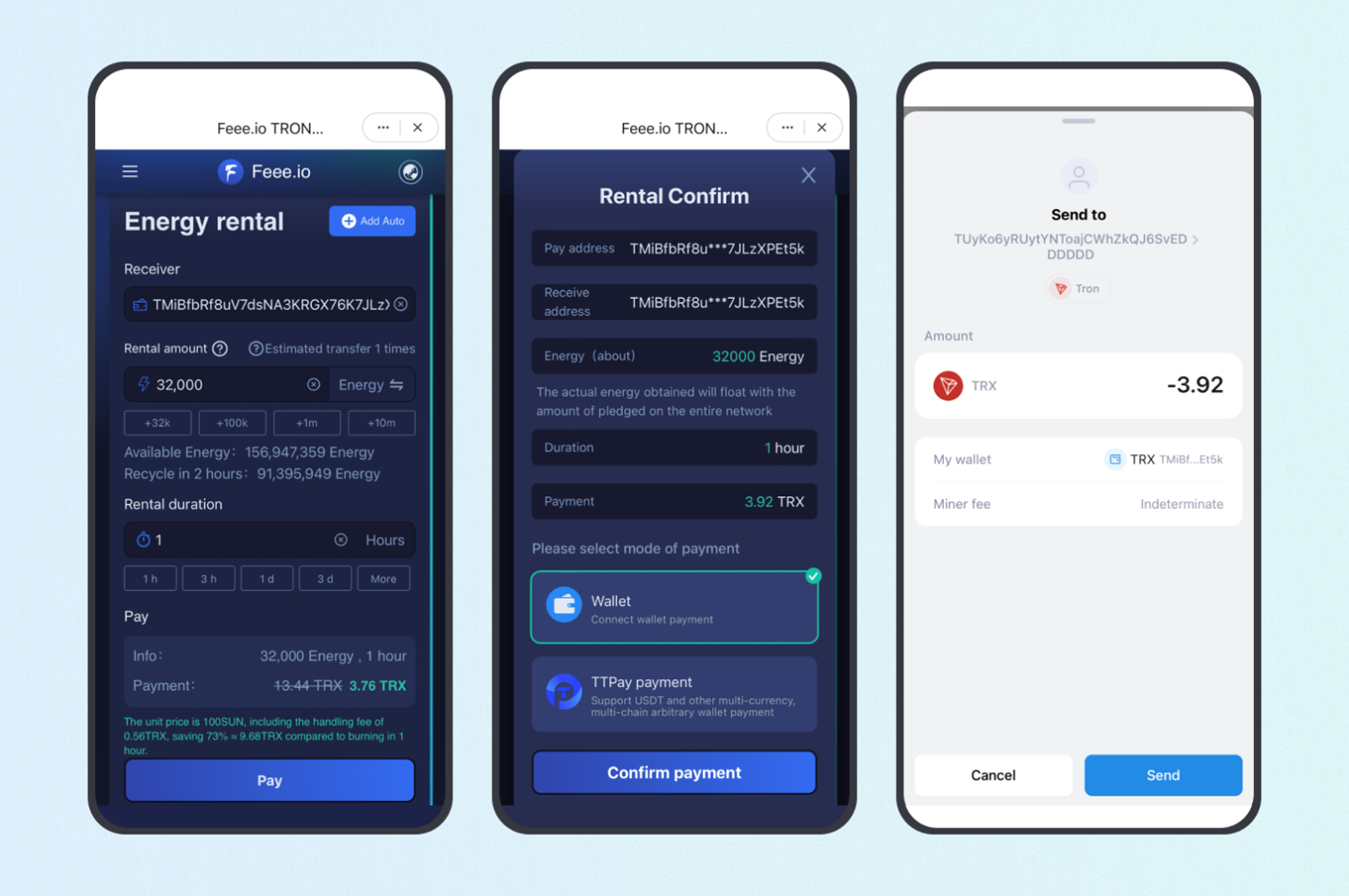
Criterion 2. Interface Convenience
Here, of course, services that are initially designed for Energy rental services "win". For most large platforms, this service is no longer the main one, so the interface remains the one that was developed for trading cryptocurrency assets, exchanging, etc. At best, such a cryptocurrency platform will offer a Telegram bot.
We recommend giving preference to services that are built on the Tron network specifically for Energy rental. As a rule, such services have both a web interface and a Telegram bot.
This is convenient for serving users with different Energy volume requirements. A Telegram bot is a simpler principle of process automation, while a web interface allows connecting the client's wallet via API. And this expands the possibilities for the client up to ordering Energy wallet charging on a schedule or in accordance with an established trigger.
Below is a screenshot from the personal account of a NETTS Energy rental service client who has set a certain level of this resource on the balance. As soon as the Energy reserves reach this trigger, recharging is performed.
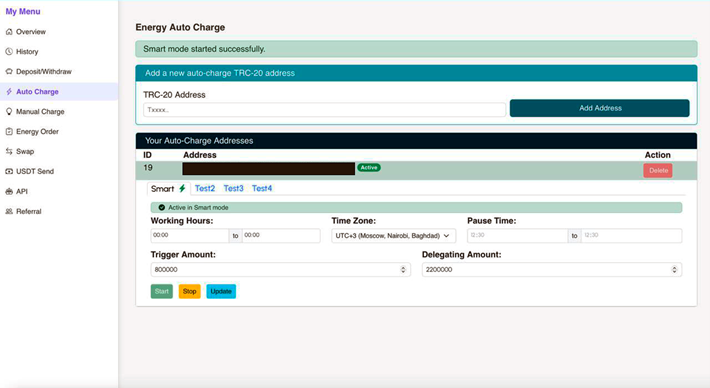
As can be seen even from this screenshot, the interface is maximally simple and convenient. And the main page immediately offers to fill out a form, also very simple and concise.
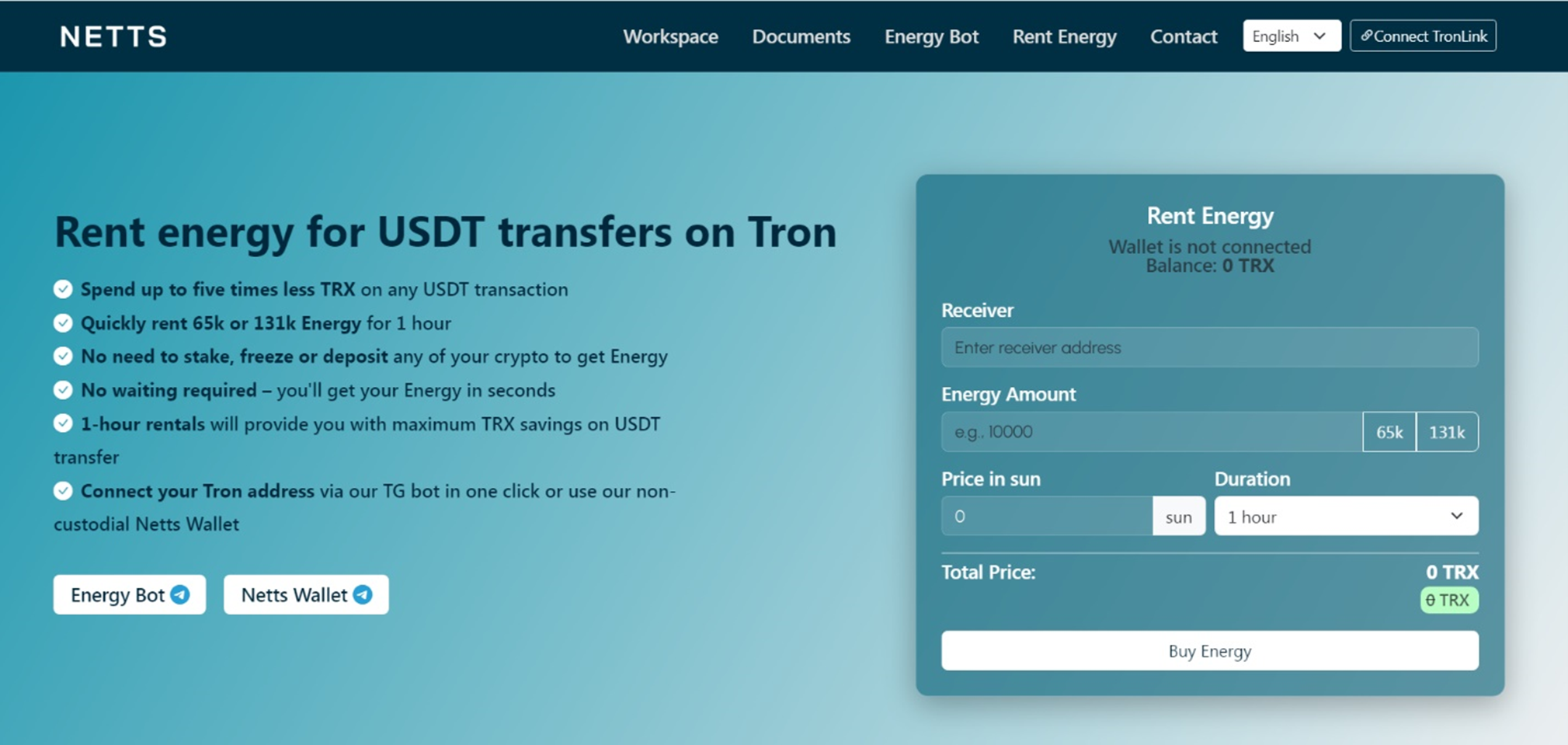
The NETTS Workspace page is also very simple and convenient to manage – all API capabilities, Smart and Host modes, and other tools are available and easy to find.
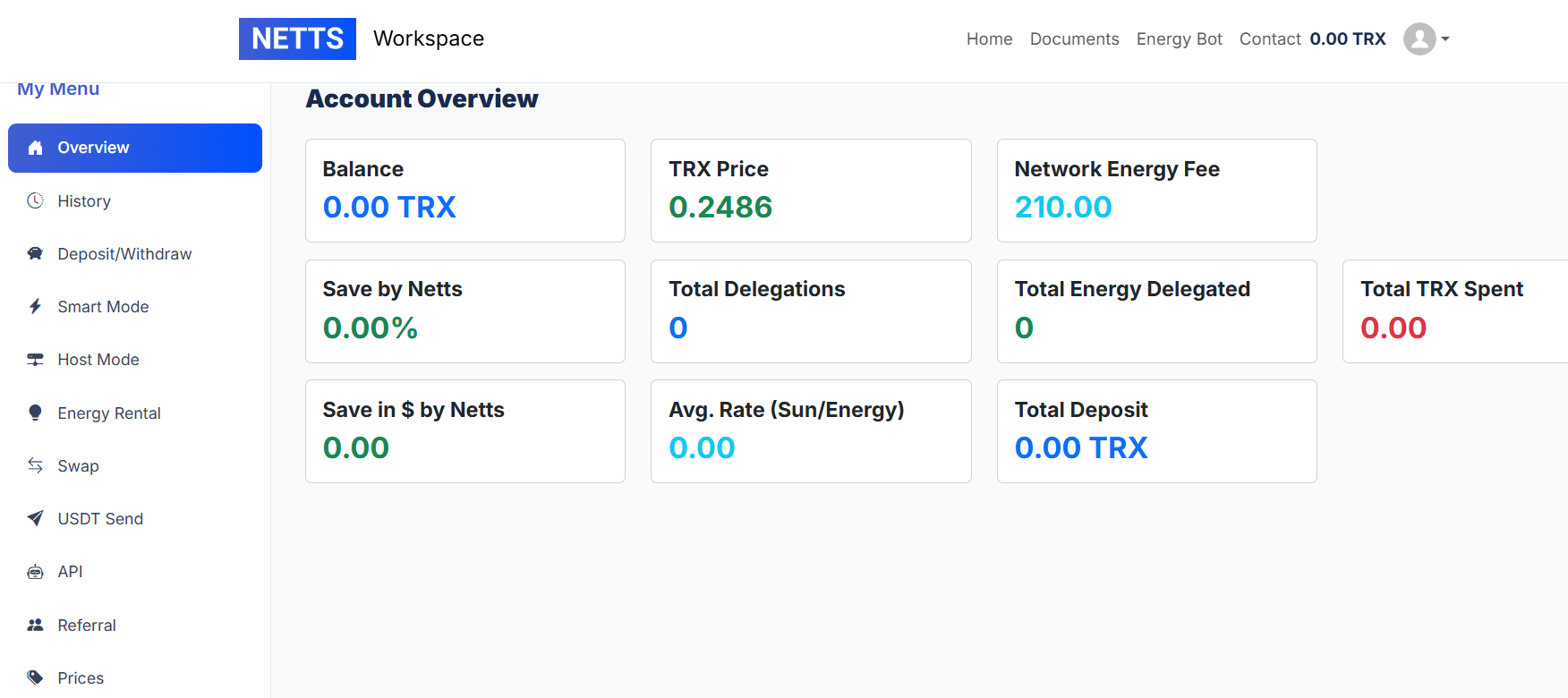
And compare with the interface of the Feee.io platform, where you will get to the rental section through the main page, and only then you can create an account.
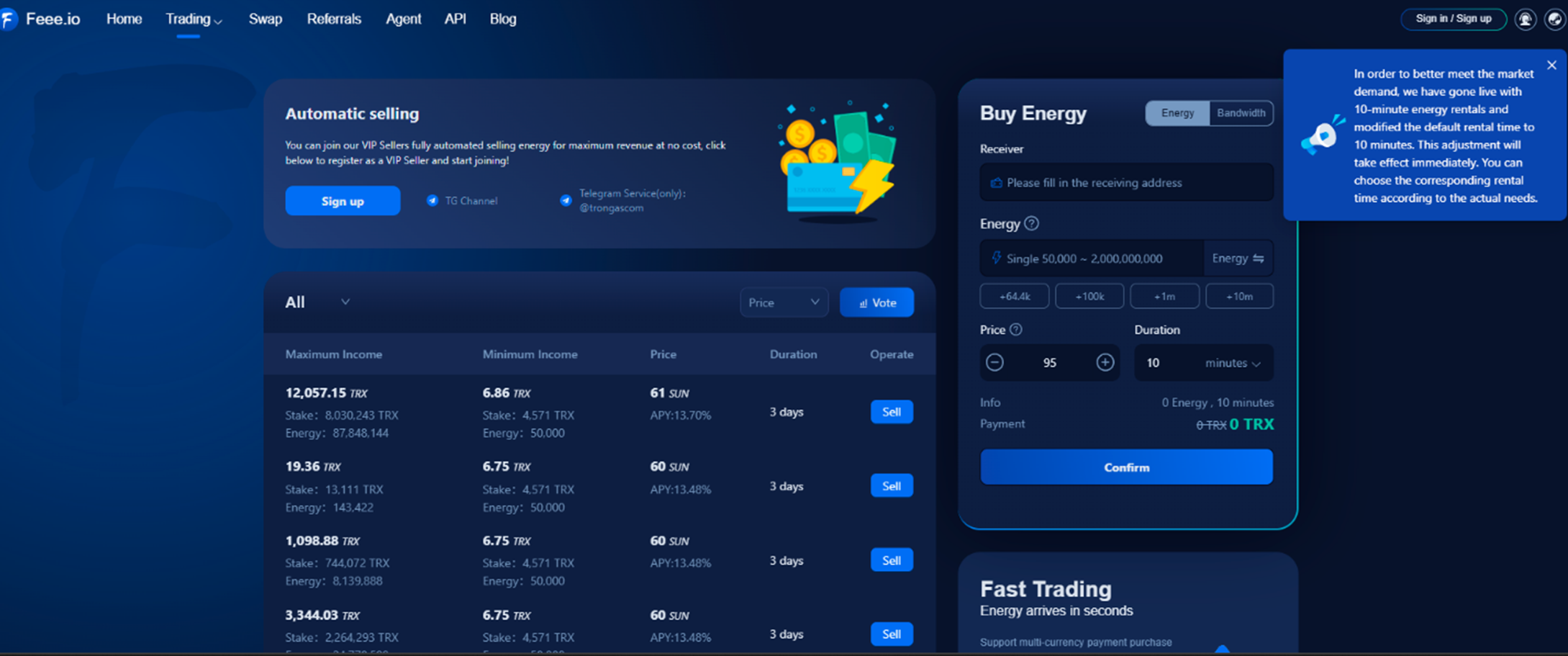
Criterion 3. Speed of Operation
Imagine a situation: you are sure that the agreed volume of Energy has arrived in your wallet and you start a transaction. And suddenly you notice that the network has burned your TRX. This is in the best case, in the worst – the transaction freezes. This means that the rented Energy arrived on the balance with a delay, albeit a small one, but for the Tron network this is enough.
That is, the speed of rented Energy delivery from the service is of great importance. Therefore, it is necessary to inquire about how long after payment the rented Energy will be credited to the balance.
The NETTS Energy rental service provides clients with the opportunity to choose a payment method – a deposit (15 TRX on the Telegram bot and 1 TRX in the personal account of the Workspace web interface with API connection) or prepayment when entering through the web interface by filling out a form.
Making a deposit implies:
- in Host mode – cyclical delivery of rented Energy according to your schedule or constant balance replenishment (eternal Energy);
- in Smart mode - delivery according to trigger readings.
That is, there simply cannot be any time delay.
When entering through the interface by filling out a form and prepaying, the time for replenishing the NETTS service client's balance is a couple of seconds after payment.
Criterion 4. Additional Functions and Integrations
Additional functions expand the possibilities of using the Energy rental service, and integration with other platforms facilitates the workflow.
Therefore, when choosing an Energy rental service, pay attention to:
- availability of API for process automation;
- possibility of automatic Energy replenishment when its level on the balance decreases;
- integration with popular wallets and exchanges.
Again, let's compare several services that provide Energy rental services on the Tron network – as an example of studying one of the selection categories.
| Service | API | Auto-Replenishment | Integration with Wallets |
|---|---|---|---|
| FeeSaver | No | Yes | TronLink |
| Tron Pool Energy | Limited | No | TronLink, Trust Wallet |
| NETTS | Full API | Yes | TronLink, Trust Wallet, Binance Wallet |
Criterion 5. Customer Support and Reputation
This is the last category in our list in order, but far from the last in importance, since quality customer support helps to quickly solve their problems. And the reputation of the service is formed precisely on the basis of reviews and user experience.
Therefore, when choosing an Energy rental service, find out the potential lessor's compliance with this criterion, paying attention to the following points:
- availability of support service (24/7, e-mail, Telegram, chat);
- speed of response to user requests;
- reviews on forums and comments from the crypto community.
Conclusion
- Choosing a service for renting Energy in the Tron network is an important step to reduce transaction fees when interacting with smart contracts, in particular – when transferring USDT TRC-20.
- Key criteria: rental cost, interface convenience, speed of operation, API support, and quality of service.
- The NETTS Energy rental service offers the best conditions according to all the above criteria: cost and quality of services, client comfort, absence of hidden fees, reliability.
Rent Energy through the NETTS service – and save up to 80% on transactions right now. NETTS is with you – against inefficient TRX burning: https://netts.io